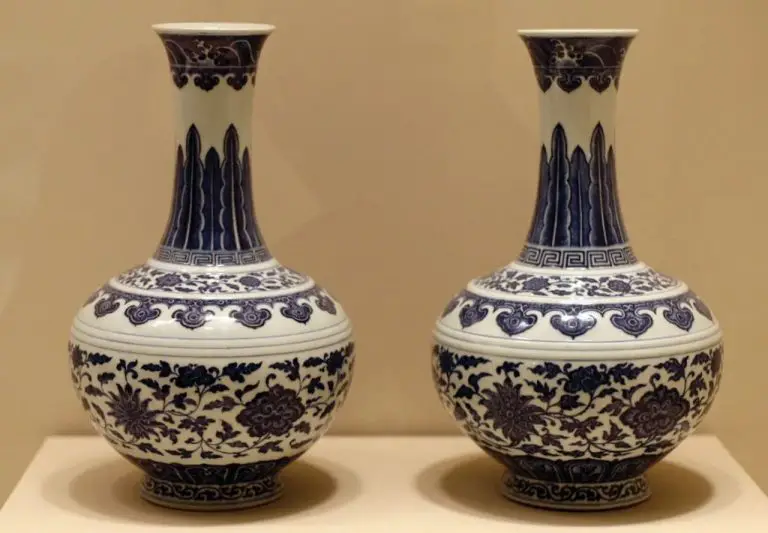How Does Clay Farming Work In Stardew Valley?
Clay is a common material found in Stardew Valley that has many uses. It can be used to craft and upgrade items like bricks, silos, and more. Clay is considered a “basic material” in Stardew Valley, meaning it is found on the farm rather than bought.
Clay is useful for any player in Stardew Valley. Having a steady supply of clay allows you to create and upgrade buildings on your farm without having to buy the resources from Robin. Clay can also be used to craft certain items for bundles or gifted to villagers who like it.
There are a few main ways to obtain clay in Stardew Valley. The primary method is by hoeing dirt patches around the map. Certain locations tend to have a higher chance of producing clay. You can also sometimes receive clay from fishing treasure chests or as a gift from villagers. Using the right tools and strategies can help maximize your clay collecting.
Obtaining the Hoe Upgrade
Before you can start farming for clay in Stardew Valley, you’ll need to upgrade your hoe tool. The basic hoe that you start with does not have the power to dig deep enough into certain tiles to uncover hidden clay deposits. Upgrading to at least an iron or steel hoe is recommended.
To upgrade your hoe, you’ll first need to collect copper ore and iron ore. These can be found by mining in the mines or purchased from Clint the blacksmith. Bring 5 copper ore and 2000g to Clint to have him upgrade your hoe to a copper hoe. Then bring 5 iron ore and 5000g to upgrade to an iron hoe. For the best results, upgrade all the way to a steel hoe before attempting to farm clay.
With the upgraded hoe in hand, you’ll be able to start tilling land across your farm and Pelican Town in search of clay deposits hidden underground. Be sure to keep your hoe upgraded as you progress to access all possible clay spawn locations.
Tilling the Land
An essential part of clay farming in Stardew Valley is tilling the land with your hoe. To till land, equip your hoe and use it on untilled dirt tiles. Each use of the hoe turns one tile into tilled soil. Tilled soil has a different appearance, with a more disturbed look compared to normal dirt.
The number of tiles you need to till depends on the size of your planned clay farming area. Many players recommend tilling at least 100-200 tiles initially as this provides a large enough area to frequently dig up clay. Tilling too few tiles results in having to wait multiple days for clay to respawn.
As you till tiles, you have a chance to immediately dig up various forage items like seeds, fiber, clay, rocks, andartifacts. The chances of getting these items improve by using higher quality hoes. So upgrading to a copper, steel, or iridium hoe will increase how much clay and other items you obtain while tilling.
Locations to Dig
There are several prime locations in Stardew Valley to dig up clay:
Beach – The beach is one of the best early-game locations to find clay. Digging along the shoreline and sandy areas during low tide can uncover plenty of clay deposits. Just be careful not to dig up the seashells and corals!
Mountain – The mountain area north of Pelican Town contains lots of clay underground. Make sure to bring an upgraded steel hoe to break through the tough soil. The best spots are around the base of the mountain and near Robin’s house construction site.
Mines – Digging through the dirt patches and floors in the mines can randomly produce clay. The deeper mine levels tend to have more clay. Farming levels 1-40 works well, just watch out for monsters!
Secret Woods – Digging up the dirt patches around the abandoned house, totems, and stumps in the Secret Woods can yield some clay. It’s not a huge amount, but worth grabbing when exploring the woods.
Farm – Your own farmland produces a small daily amount of clay from tilling. It may take a while to accumulate enough just from your farm though. Try planting wheat – the soil churns up more clay when harvesting the wheat.
Chance of Getting Clay
The chance of getting clay when tilling soil in Stardew Valley relies heavily on the game’s random number generator (RNG). When you till a tile of land, there is a small chance it will produce clay along with other forage items like fiber, seeds, and winter roots. The exact probability is unknown, but players estimate it’s around a 5-10% chance per tile.
There are a few ways to try and increase your luck when farming for clay. Using the Special Charm or Lucky Ring accessories will provide a luck bonus that can boost your odds slightly. Eating foods like Lucky Lunch or Pumpkin Soup that give a luck buff will also help. Additionally, ensuring you have a high daily luck rating by checking the TV fortune teller will raise the chances of finding clay.
On average, players report obtaining around 1-3 pieces of clay per tile tilled. But this can vary significantly due to the randomness involved. Some tiles will produce no clay at all, while others may yield multiple pieces. Persistence and tilling many tiles is key. Tilling during the winter may provide better clay yields when other forage items are out of season.
While frustrating at times, the randomness of clay drops ensures mining the soil remains rewarding. Tilling in Stardew Valley tests your luck, with a rush of excitement when a coveted clay piece is uncovered.
Buffs and Items
There are a few buffs and items in Stardew Valley that can increase your chances of getting clay while farming. Consuming certain foods before you head out to dig can provide a temporary luck or mining buff. The two most useful food buffs are Lucky Lunch and Spicy Eel. Lucky Lunch provides a +3 luck buff for around 6 minutes, while Spicy Eel gives a +1 luck buff for around 10 minutes. Having higher luck increases the chances for multiple clay drops from each tilled spot.
Leveling up Foraging and Mining skills provide permanent profession buffs. At level 5 Foraging, the Botanist profession makes it 10% more likely to unearth clay. At level 5 Mining, the Geologist profession makes it easier to find gems and minerals like clay. Finally, some special charms bought from the Desert Trader also boost luck when equipped.
Building Clay Makers
Clay Makers are an important building for producing Refined Quartz from the clay you dig up. Refined Quartz is used in a variety of crafting recipes in Stardew Valley.
The main purpose of Clay Makers is to convert basic Clay into Refined Quartz. Each clay processed in the Clay Maker will produce 1 Refined Quartz. This allows you to get more value out of the clay you dig up.
To build a Clay Maker you will need:
- 10 Wood
- 5 Stone
- 1 Copper Bar
Bring these materials to a crafting menu and select the Clay Maker to build it. Place the Clay Maker on your farm wherever you want it to be located.
The return on investment for Clay Makers comes from turning low value Clay into much more useful Refined Quartz. Each Refined Quartz sells for 150g, while basic Clay only sells for 20g. So converting Clay into Refined Quartz increases its value by 7.5 times!
With a steady supply of Clay, Clay Makers can produce a nice passive income stream on your farm. Locate them close to your main clay digging area for convenience.
Crafting with Clay
Once you have a good stockpile of clay, there are many useful items you can craft with it in Stardew Valley. Some of the most important clay recipes and uses include:
Bricks – Clay can be used to craft bricks which are needed for crafting things like chimneys, decorative pots, and beehives. To make 1 brick you need 1 clay and 1 stone in a furnace.
Recycling Machine – The recycling machine allows you to break down items into useful resources. Crafting it takes 2 iron bars, 1 gold bar, and 5 clay.
Bee House – These enable you to produce honey. Each bee house requires 1 clay, 1 wood, and 1 maple syrup.
Decorative Pots – Clay pots can be placed around your farm for decorative purposes. Small clay pots require 3 clay and 1 copper bar.
Chimney – Chimneys are cosmetic house upgrades. Each chimney takes 6 bricks (6 clay, 6 stone) and 1 copper bar.
Overall, clay is very useful for crafting important items like recycling machines and bee houses. It’s also valuable for decorative purposes, bricks, and chimneys to customize your farm’s look.
Clay for Profit
One of the best ways to make money from clay farming in Stardew Valley is by turning it into high value craftable items. Here’s an analysis of some of the most profitable ways to use your clay.
Cost Analysis
It takes 2 clay to craft 1 Clay Makers machine which sells for 1000g. That’s a 500% profit margin per clay! Even higher value items can be crafted once you have the machines set up.
Most Profitable Clay Items
Some of the most profitable items to craft and sell from clay include:
- Brick Flooring – 5 clay turns into 2000g
- Weathered Flooring – 5 clay turns into 1500g
- Fireplace – 20 clay turns into 5000g
As you can see, with the right infrastructure in place, clay can become a very lucrative recurring source of revenue in Stardew Valley.
Conclusion
In summary, clay farming in Stardew Valley requires upgrading your hoe, tilling land in certain locations, and having a bit of luck and patience. The Secret Woods, Cindersap Forest, and Beach are the most abundant sources of naturally occurring clay deposits. Use buffs from food items to increase your luck and magnetism to collect even more clay. Once you have a steady clay income, take advantage of clay makers to duplicate your clay. Then use the clay for crafting or selling for profit. With the right tools and technique, you’ll be swimming in clay in no time.
A few final tips for efficient clay farming: Check the TV daily for luck to maximize clay finds on good luck days. Eat Lucky Lunch or Pumpkin Soup for +3 luck before farming. Use the Burglar’s Ring accessory to sometimes double clay drops. And farm during rain for increased forage spawns. Happy farming!



